
Event
Report
2023 YDCCC trip to the Isle of Man
First report by Martin Vinson
Richard and Jean, Tony and Sheila and Jackie and I visited the Isle of
Man for a few days in July. The tour was arranged with Scenic Car Tours,
who had organised the club’s visit to Ireland in May. Also on the trip
were a couple of Jaguar X150s, a Mazda MX5, an Audi A3 and a very nice
1960 Mercedes SL. We all met in the queue for the ferry and dined
together on the first evening, but after that everyone, including the
YDCCC lot, kept pretty much to themselves during the day and just met up
in the bar before dinner. I am sure that Richard and Sheila will have
sent a proper report, so this is just a quick overview!
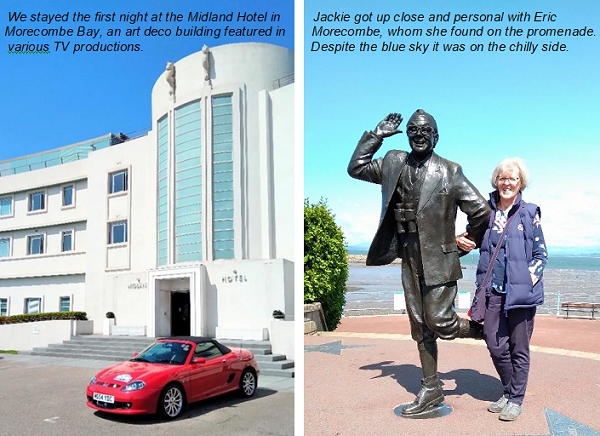
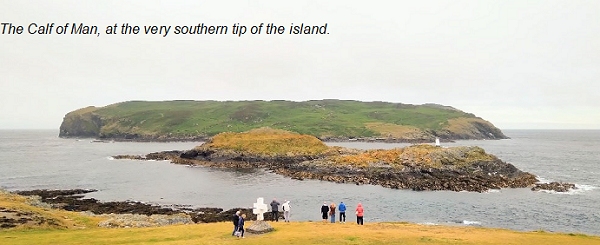
Second Report by Sheila Mason
Douglas Bay Horse Tramway - Isle of Man
Tony and I really enjoyed our stay on the Isle of Man, organised by
Scenic Tours, in the excellent company of Jean and Richard Culmer and
Jackie and Martin Vinson.
The Sunday morning was really sunny so we took the opportunity to visit
Douglas Bay and have a ride on the Horse Tramway. The bay is about a
mile and a half long flanked by beautiful whitewashed Victorian and
Edwardian hotels and apartments. We parked at one end and walked along
the seafront promenade to the terminus to catch a tram.
While we waited, we read the history of the tramway, it was opened in
1876 and is the only tramway in the Northern hemisphere and it delighted
us to read the only other tramway is in Southern Australia at Victor
Harbour, a place we have visited many times and taken rides on the
tramway to Granite Island, to see the Fairy Penguins, a lovely excursion
when the Australian Grandchildren were small. The Victor Harbour tram
opened in 1894, but, unlike the Douglas single deck tram it is a double
decker both being pulled by and Clydesdale horses.
The tram arrived pulled by a beautiful horse called Torone, his coat was
immaculate and reassuring to hear how well looked after they are, there
is a team of fifty horses and they never work more than an hour a day,
the retirement age is fifteen when they go to a care home for elderly
horses situated just near the hotel we were staying in. We enjoyed the
ride back to the car.
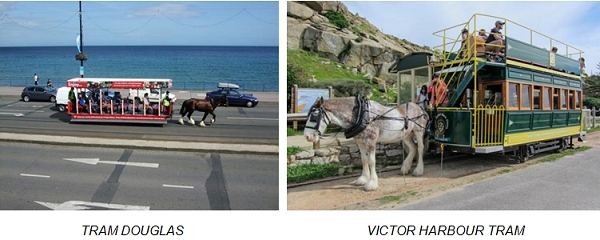
Third report by Richard Culmer
The IoM has been on our “bucket list” for quite a while. We spotted a 4
night trip in the Scenic Car Tours (SCT) brochure and thought why not?
Sheila & Tony Mason and Martin & Jackie Vinson also decided to go on
this trip so the club was well represented. Eight cars in total were
booked on the trip – apart from our three there was an Audi A3 (would
have been in an MGB but it was poorly), an MX5, two Jaguar XKs and a
beautiful 1960 Mercedes 190 SL.
It was an afternoon sailing from Heysham to Douglas. Jean and I opted to
drive across to Heysham on the 29th; the others decided to stay over the
night before in the Midland Hotel in Morecambe, a fine looking art deco
building. The crossing was long (nearly 4 hours) but uneventful; the
Irish Sea was like a millpond. We docked at 1800hrs and were soon away
to our hotel, the 4* Comis Hotel and Golf Resort, which was less than 10
minutes drive from the port. There was just time to check in, freshen up
and get changed and then it was time to meet the rest of the group for
dinner.
The hotel was well appointed and the rooms were very comfortable. One
quirk was the room numbering system. You would normally expect rooms in
the 300s to be on the third floor, in the 500s to be on the fifth floor
and so on. Not here! Our 309 shared its floor with 500s and others. The
hotel director blamed the architects and said it would have cost £12k to
reprogramme the lifts so he lived with it. Whatever, once you’d worked
out how to get to your room it was OK.
SCT don’t provide suggested routes for each day as the MGOC do on their
trips, but they do give you comprehensive information about all the
places of interest, plus maps, so you can plan your own days. As always
there was far too much to see and do in the time available. Aside from
the TT course there’s a steam railway between Douglas and Port Erin, an
electric railway (antiquated) between Douglas and Ramsey, an electric
railway to the summit of Snaefell, horse drawn trams on the front in
Douglas, a large motor museum, a transport museum, various other
museums, assorted castles, the Great Laxey Wheel (mining heritage), lots
of good driving roads mostly without much traffic, and some lovely
scenery.
We all went to the motor museum, which is privately owned and operated
by a father and son team. There was a huge collection of motor bikes in
addition to cars and even a Soyuz Space capsule they’d managed to
acquire. There was only one MG that I saw, a rubber bumper B, and far
too many huge American cars with fins for my liking, but overall it was
worth the visit.
We drove the TT course though not I hasten to add at an average speed
well in excess of 100mph! How the riders do the speeds they do in the
built-up area sections of the course is beyond me. The mountain section
was enjoyable, a real top down undulating bendy road. Interestingly once
out of built-up areas there is no set speed limit, but most drivers
seemed to be reasonably sensible.
All too soon our time was up and we headed down to the port for an early
check-in; no time for a last full English breakfast in the hotel. After
another flat calm crossing it was time to hit the road back home again.
The weather had been mixed during the trip – quite windy, especially at
the top of Snaefell, with a lot of showers thrown in. We only managed to
put the top down on the last morning. The IoM is an interesting place to
visit, but parts of it feel as if they are stuck in a time warp. The
little seaside towns have some very grand buildings from Victorian /
Edwardian times when the towns were resorts, but feel as if little has
changed since. We would visit again, but many other places are ahead in
the queue!
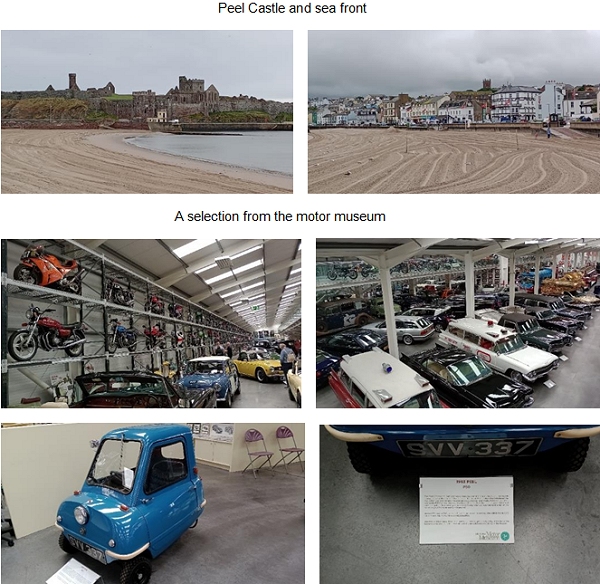
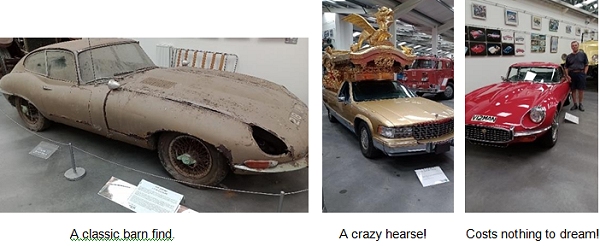
The Laxey water wheel, an amazing piece of Victorian engineering used to
drive pumps to extract water from an adjacent mine.
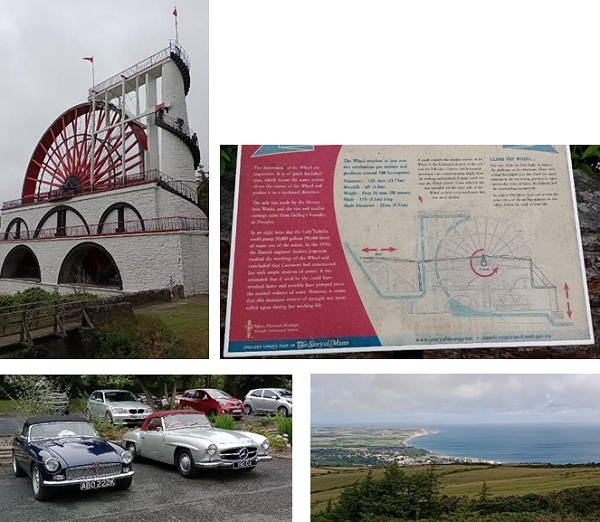
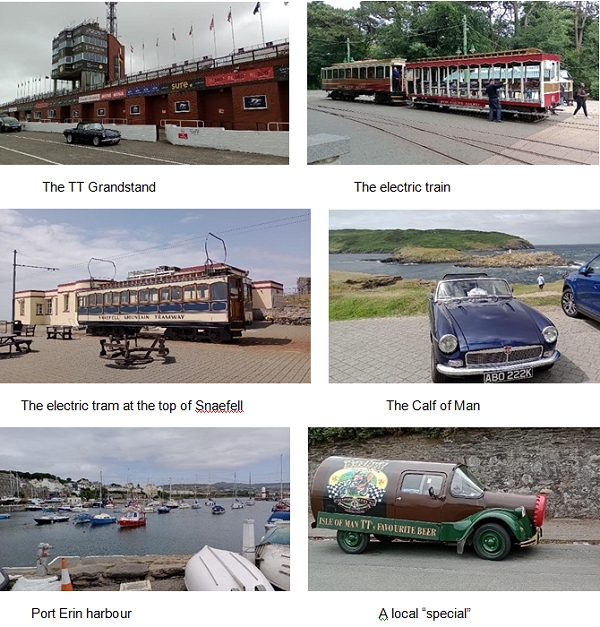
|